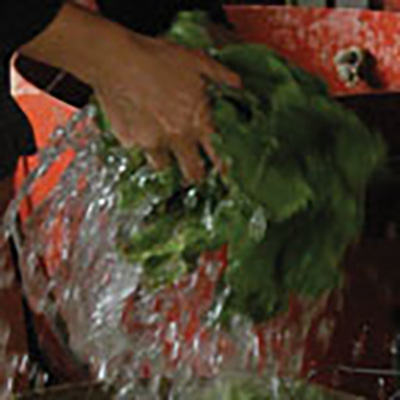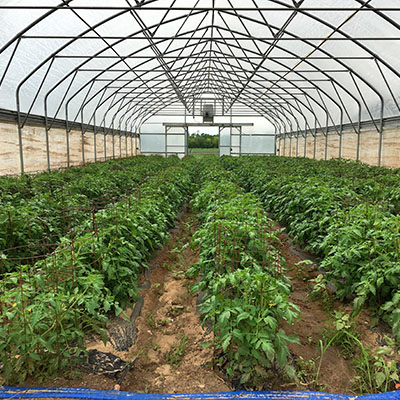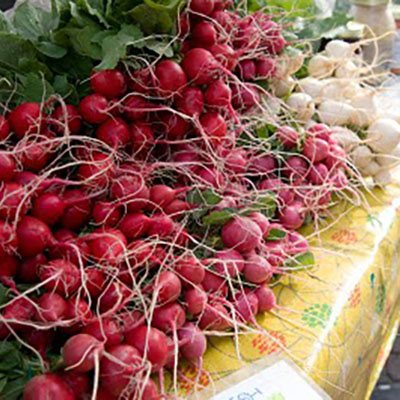Growing for Market in partnership with Johnny's Selected Seeds has created a library of expert information about growing and selling vegetables and flowers. Links in the article will take you to johnnyseeds.com.
Subscribe to Growing for Market for more great ideas about growing and marketing!
For more topics in the series, click on Market Farming Basics in the left column.

![]()
Choosing varieties
When your seed catalogs arrive, the first thing to catch your eye may be the varieties identified as "NEW!" Johnny's Selected Seeds alone has more than 100 new seed varieties in the 2010 catalog. It may seem a bit overwhelming - how do you sort through all the new varieties, compare them with old varieties, and make your selections? If you're a beginner, or trying a completely new crop, where do you even begin? Here is a systematic way to go about choosing varieties:

First, make a list of everything you grew last season. Highlight the varieties that did well, and mark those for reordering. In the unlikely event that one of your varieties is missing from the catalog, start reading descriptions to see if anything is named as a replacement. If you don't see any mention of your star variety, give Johnny's a call. If seed is available, your sales rep can special order it for you. If there was a crop failure, however, and it's just not possible to get seed, you'll have to look for a replacement variety.
Next, think about the crops that didn't do well for you last season. Analyze the problems you had with each - disease, low yield, too quick to bolt, sunscald on the fruits, and so on. Go back to the catalog and read descriptions carefully to find varieties with traits that may address your problem. Johnny's catalog descriptions use objective criteria to help you understand the differences among varieties, but if you are unsure about anything, call your sales rep. Pick at least two varieties to trial.
At this point, you are well-positioned to repeat your successes and overcome your failures from the past. Now you can think about adding some new crops, whether they are new in the catalog or just new to you. We recommend that you make a cup of tea, find a comfortable chair, and start reading the catalog from start to finish. If a variety description appeals to you or stimulates marketing ideas, check it off for further consideration. Look at those identified as "NEW!" to see if you want to give them a try.

If you're like most growers, your wish list will be bigger than your garden and you will have to refine your selections. Check out a few forums online to see what other growers have said about varieties you are considering. Cornell University has an online vegetable variety rating project http://vegvariety.cce.cornell.edu/index.php with more than 5,000 varieties listed. Growers from all parts of the country contribute to the project, so you may find information about varieties that do well in your area.
If a crop is completely new to you, find out if your state Extension service has any recommendations on varieties. Check with other states in your region, too. Varieties that have been trialed and performed well, even if they are not the newest varieties, provide a good starting point and can be used as a basis for comparing trial varieties.
Think about extending your season with hoophouses and row covers in winter or shade cloth in summer. Look for the special symbols in the catalog that denote cold tolerance, heat tolerance, and greenhouse production. You will be more successful at season extension if you choose the right varieties.
Set up variety trials so that they produce useful data. See the Johnny's website for information on how to conduct a variety trial.
Finally, keep good records of your varieties. Record information about planting dates, harvest dates, yield, insect and disease problems, appearance, and market acceptance. Next year, when it's time to start variety selection again, those records will make your work much easier.
• Subscribe to Growing for Market for the latest news and ideas.
Reprinted from JSS Advantage December 2009



 Insect pollination is essential to many vegetable and fruit crops, including tomatoes, squash, pumpkins, watermelons, blueberries, blackberries, apples, almonds, and many others. In the case of watermelons, there will be no fruit without pollination. Some vegetables don't require pollination to set fruit, but pollination by bees will result in larger and more abundant fruits. Nearly 75% of the flowering plants on Earth rely on pollinators to set seed or fruit, as well as one-third of our food crops, and most pollination is performed by honey bees, native bees, and other insects.
Insect pollination is essential to many vegetable and fruit crops, including tomatoes, squash, pumpkins, watermelons, blueberries, blackberries, apples, almonds, and many others. In the case of watermelons, there will be no fruit without pollination. Some vegetables don't require pollination to set fruit, but pollination by bees will result in larger and more abundant fruits. Nearly 75% of the flowering plants on Earth rely on pollinators to set seed or fruit, as well as one-third of our food crops, and most pollination is performed by honey bees, native bees, and other insects. 




